The B2B case study page of many SaaS websites look like this:
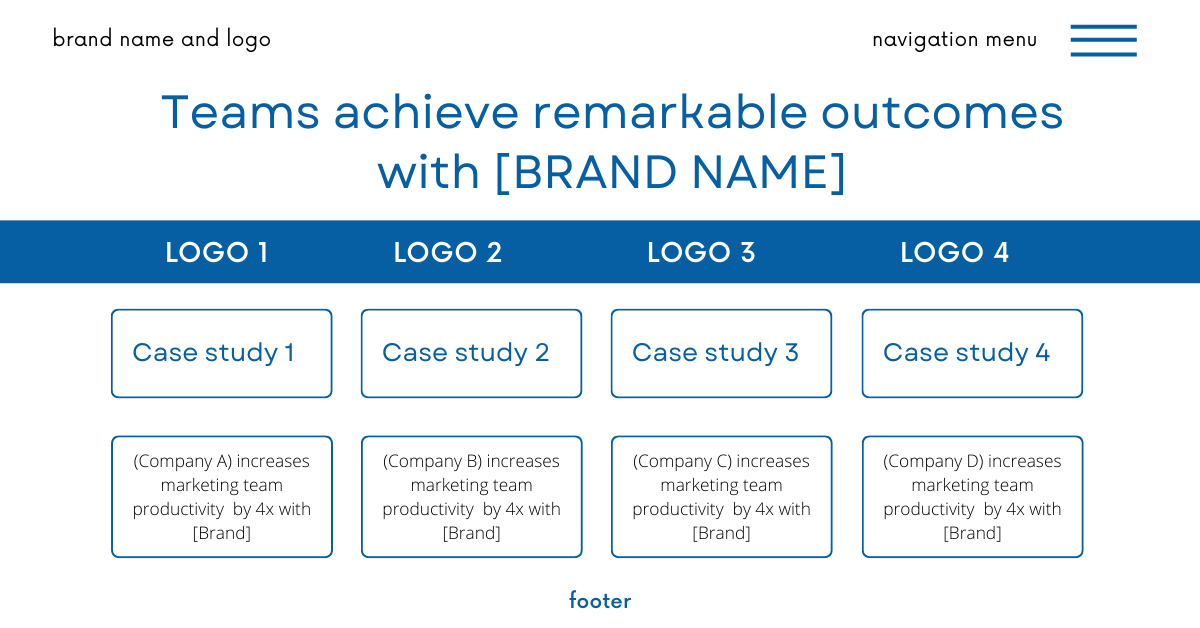
Case study web page
If you have only four case studies, this arrangement works.
But if you’re building a case study library, this approach becomes disorganized and makes it hard for prospects to find stories that relate to their problem quickly.
To fix this challenge, you need to use different filters to make it easy for prospects to find relevant case studies.
In this post, we’ll explore nine types of filters that’ll help your prospects to find relatable stories fast.
We’ll also see examples of brands that have gotten the hang of using these filters.
Let’s dive in.
1. Filter by industry
If you run a horizontal SaaS company that serves multiple industries, this filter is a must-use. The VP of marketing in a construction firm will probably want to know how other construction firms used your product and got results. The same applies to decision makers in industries like finance, manufacturing, healthcare, and education.
See how Wrike uses the filter by industry functionality to improve its user experience:
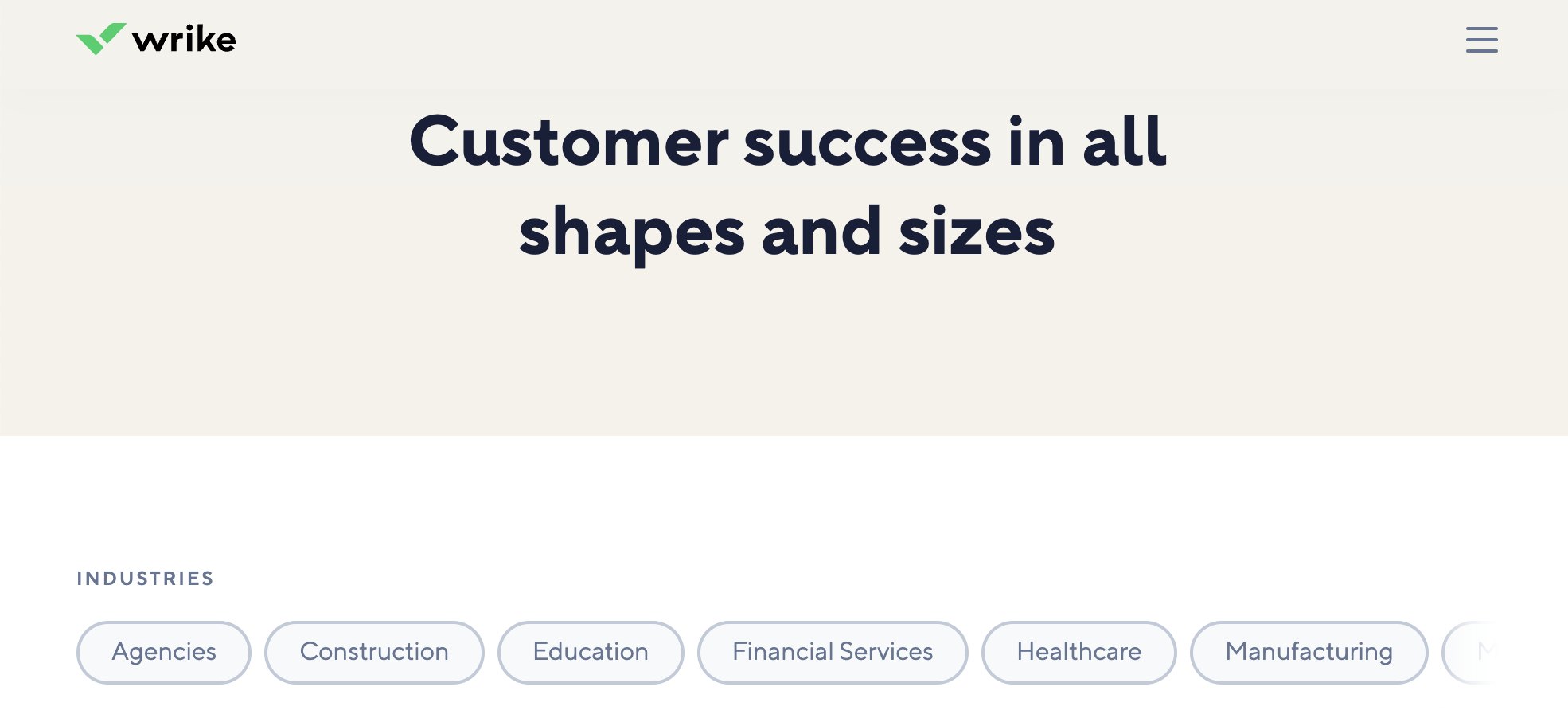
2. Filter by competitor
Customers often get pissed off by many SaaS products, causing them to switch to competitors. And with over 10,000 SaaS companies today, chances that you’ll have tens, if not hundreds, of competitors is high. This is where the filter by competitor functionality shines.
Using this filter helps prospects to find the case studies of many product switchers who had similar challenges. Here’s how Oracle Netsuite brilliantly puts the filter by competitor (All Applications Replaced) functionality to work:

3. Filter by company size
Companies differ on many fronts, like size, budget, and their stage. What works for a small company with 20 employees may be inadequate for an enterprise company with 1,000+ employees. Notion knows this and that’s why they have a simple filter based on company size.
Whether you’re looking for personal stories, or want stories of small, medium, or enterprise companies, this filter narrows your search fast.
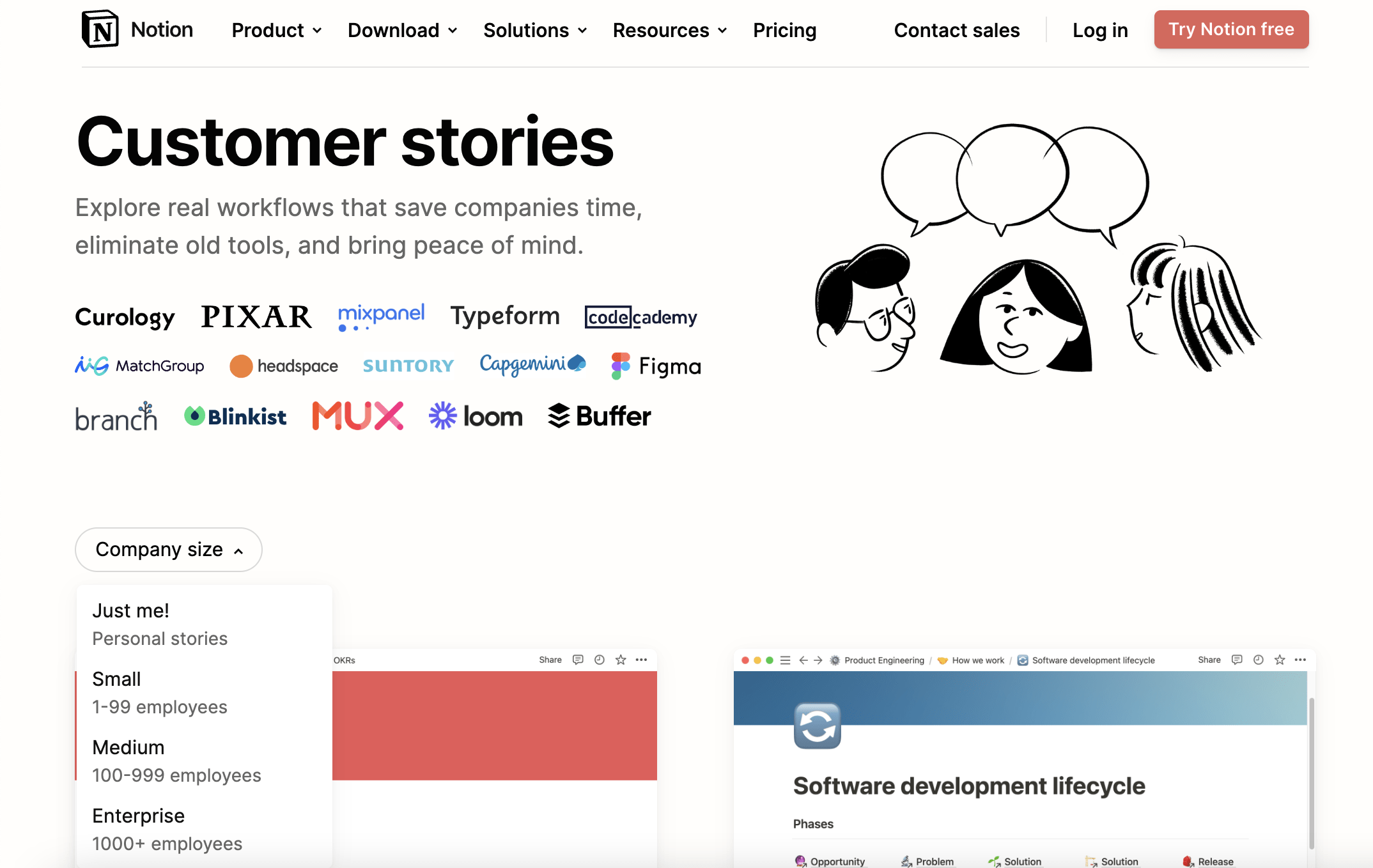
4. Filter by products or solutions
If you have a gazillion number of products or solutions, this filtering option will help users to find case studies of specific products or solutions fast.
Imagine if Okta, the identity management service with 90+ case studies, didn’t use this filter? Prospects will endlessly scroll, dive into irrelevant case studies, and may have a sour experience.
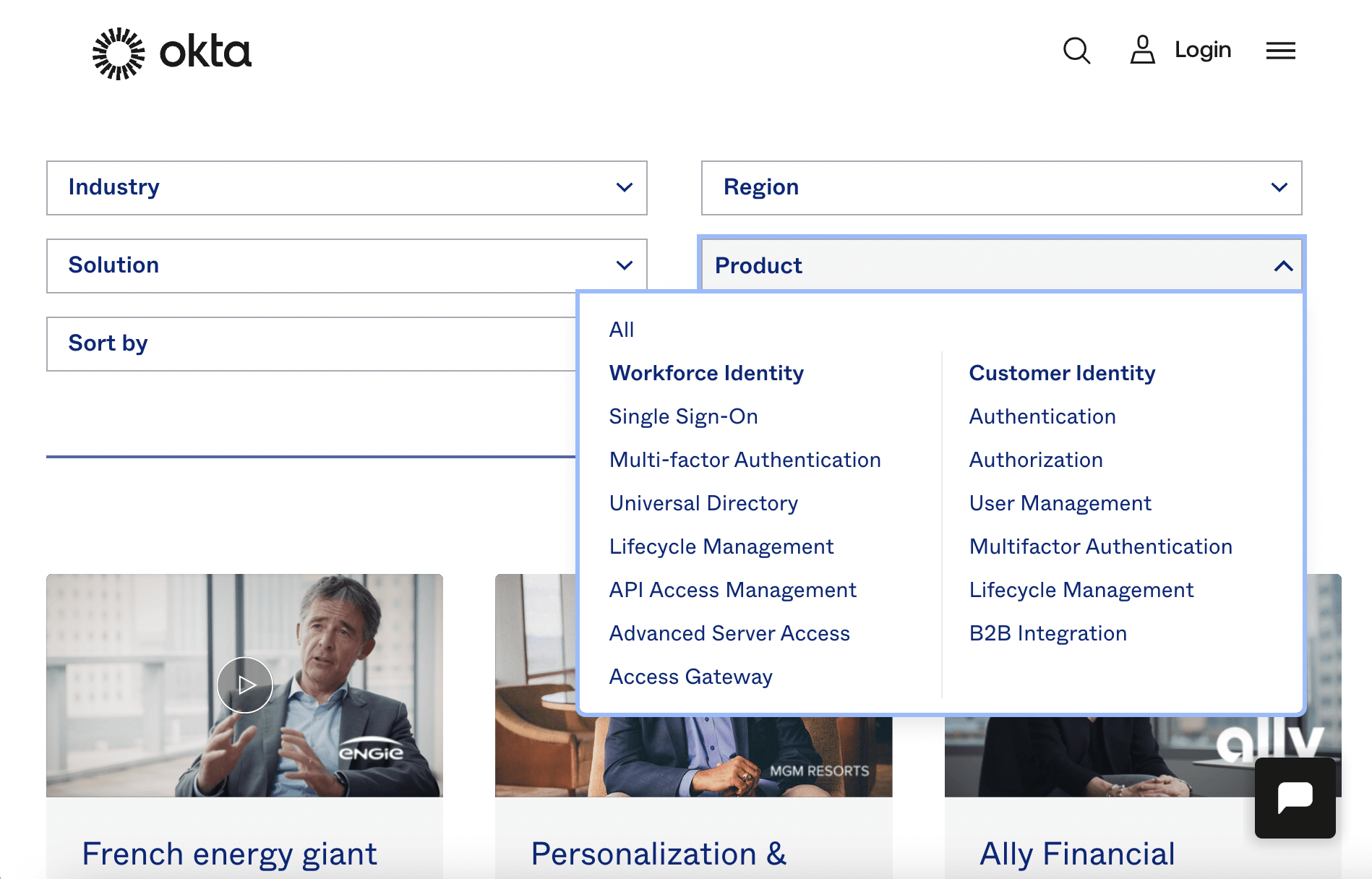
Twilio Segment, a leading customer platform with 80+ case studies also adopts a similar approach.
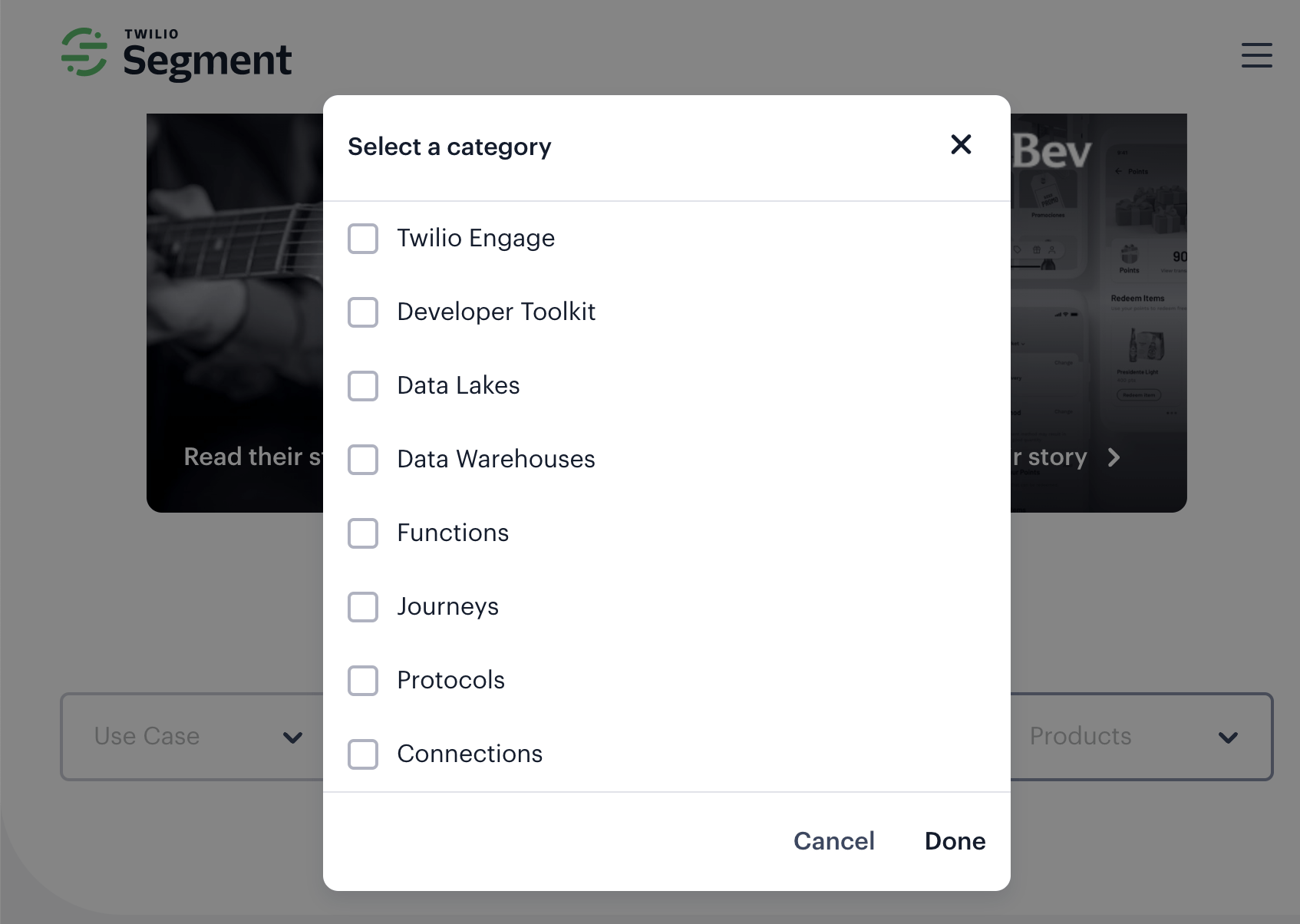
5. Filter by goals
Think about the things your product can do. How do they ease the life of your prospect?
- Does your product cut onboarding time in half?
- Does it make teams more productive?
- Does it save your prospect’s money?
When prospects can filter your case studies by their goals, they get a sneak peek into what they can achieve with your product. This filter is also powerful for email nurture and sales calls because you now know the exact outcomes your prospect seeks.
Plaid perfectly executes this filter as prospects can see the goals they desire once they enter their case study page.
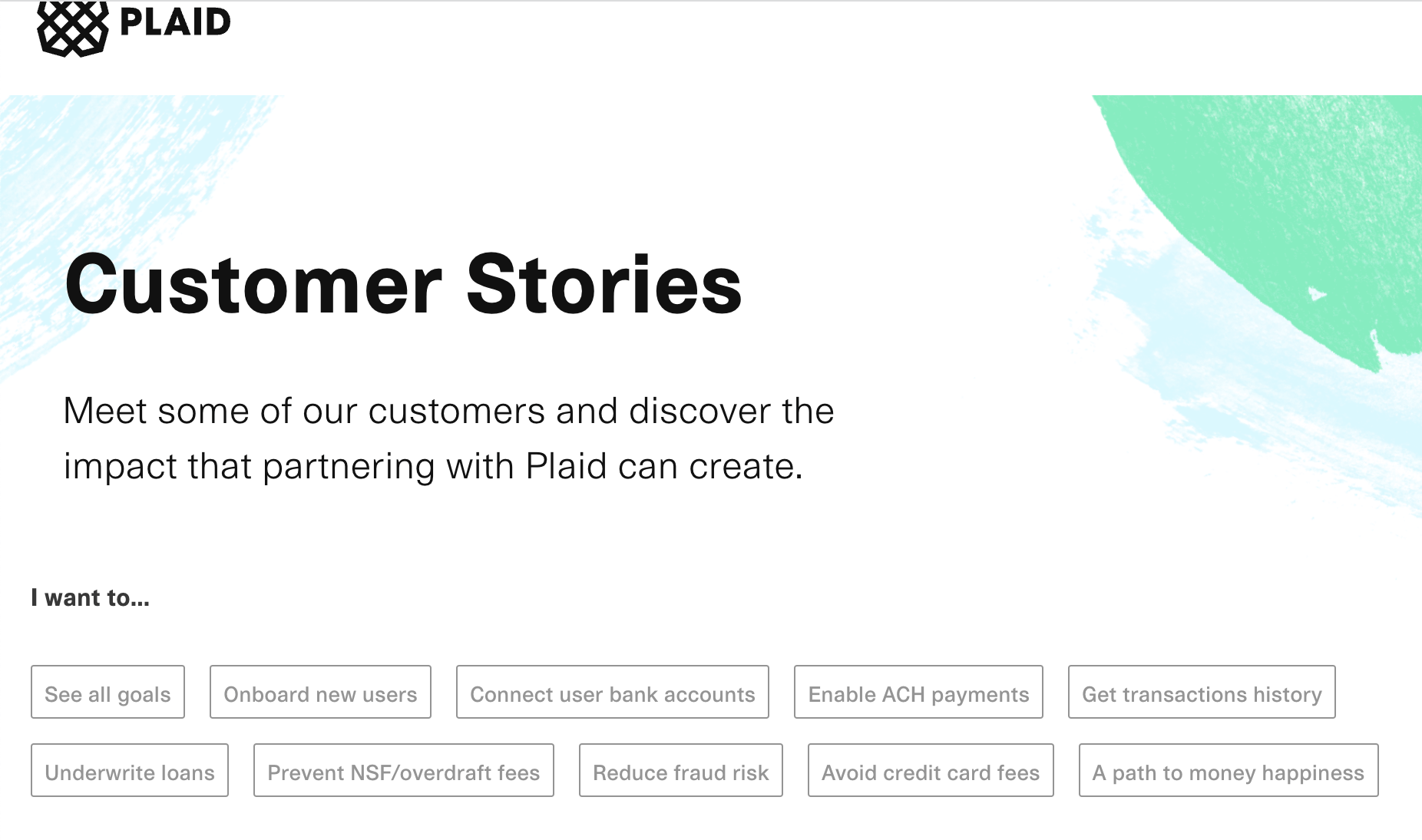
6. Filter by customer
Case studies that appeal to a content manager may not mean much to a CMO. The same goes for case studies that’ll hit the mark for agency owners versus freelancers. These are all different folks who’ll like to hear from people like themselves.
SEMrush understands this and that’s why they allow prospects to filter case studies by client-type.
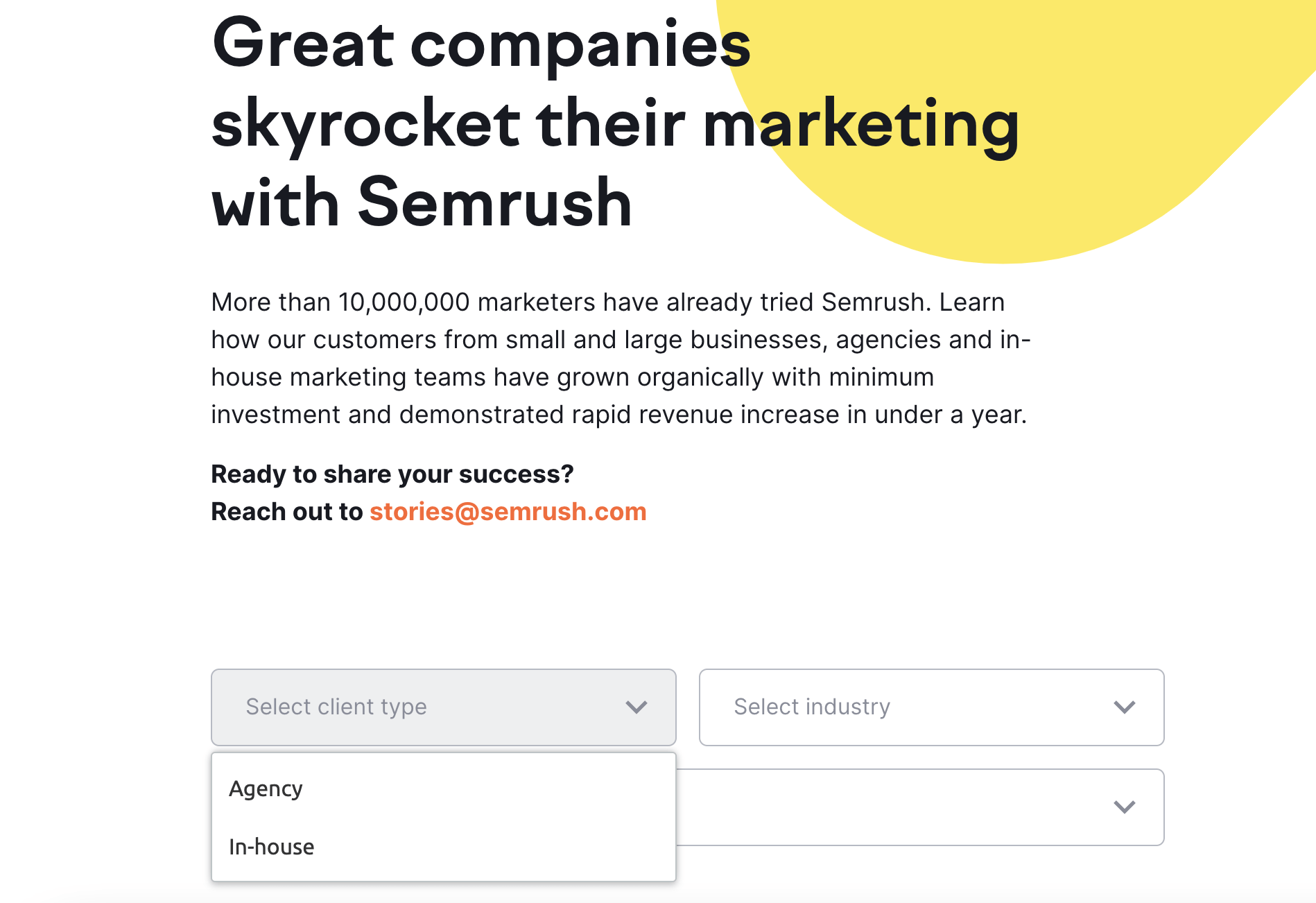
7. Filter by content-type
Content goes beyond the written word and includes videos.
Video case studies are expensive to create, but they are worth it. This doesn’t mean all your case studies should be on video. There should be a balance.
Having both video and written case studies allows prospects to choose what they prefer. And allowing them to filter by content-type makes the process even easier.
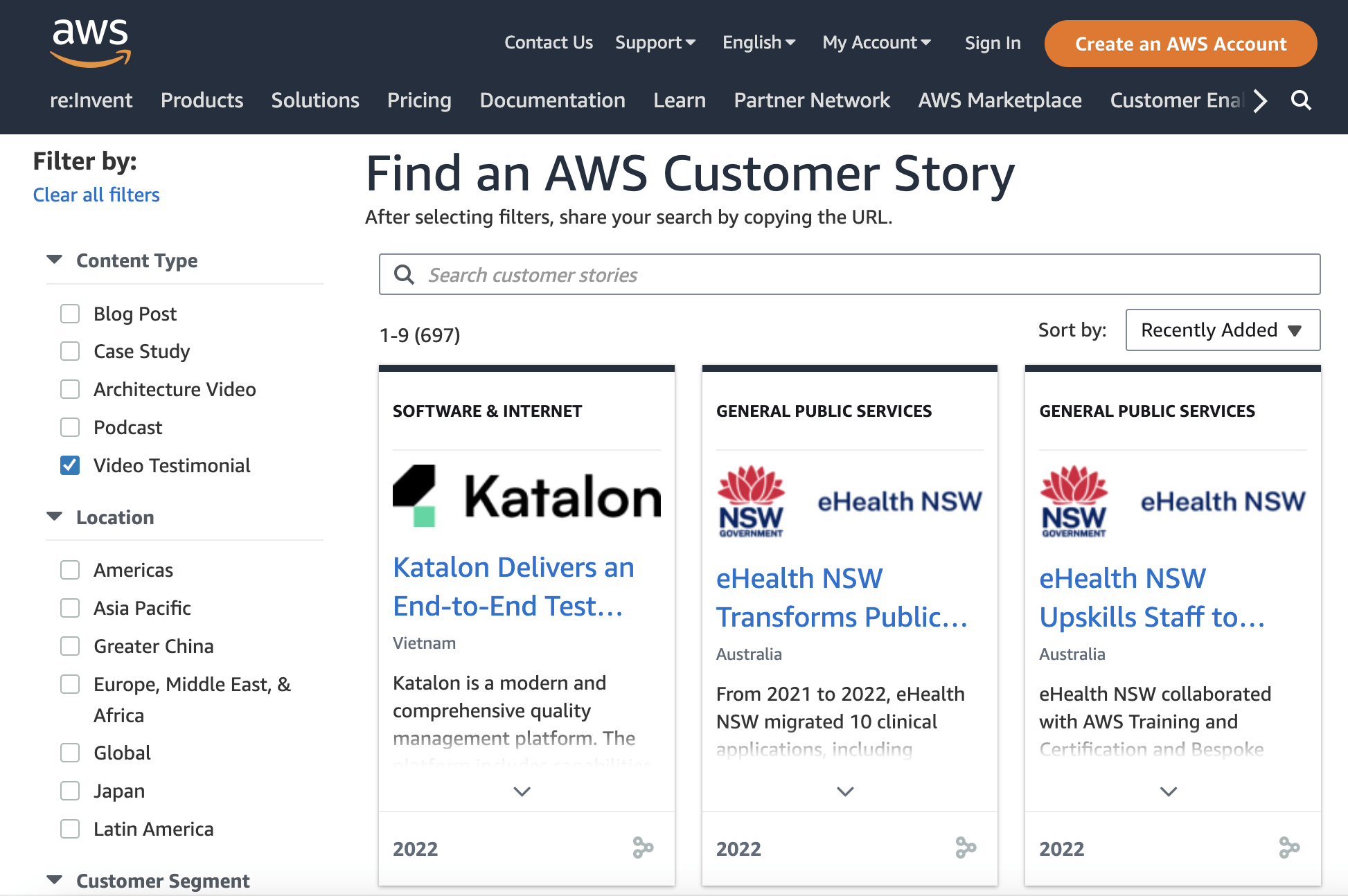
8. Filter by location
Britons will gravitate towards their citizens. The same goes for Americans, Canadians, and Australians.
You get the picture.
If you serve a global audience, get customer stories for the different countries and regions where you operate. See how Karbon uses the location filter for their case studies.
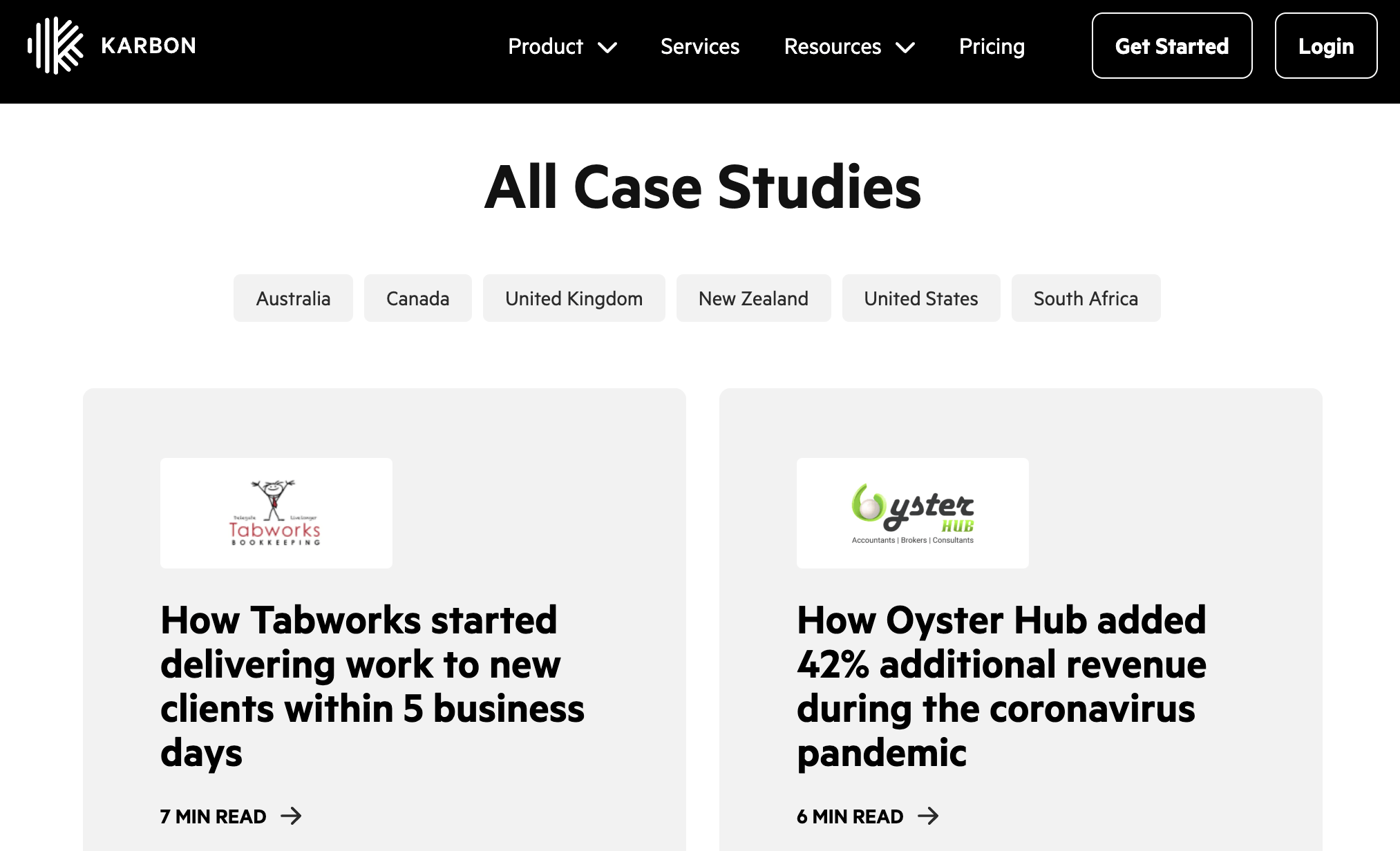
9. Filter combination
With filters, more is better.
Giving prospects several options allows them to narrow and find the exact case studies that fit their situation.
One popular company with just the right amount of filters is Salesforce. They have filters for industry, products, business type, business size, and customer success group.
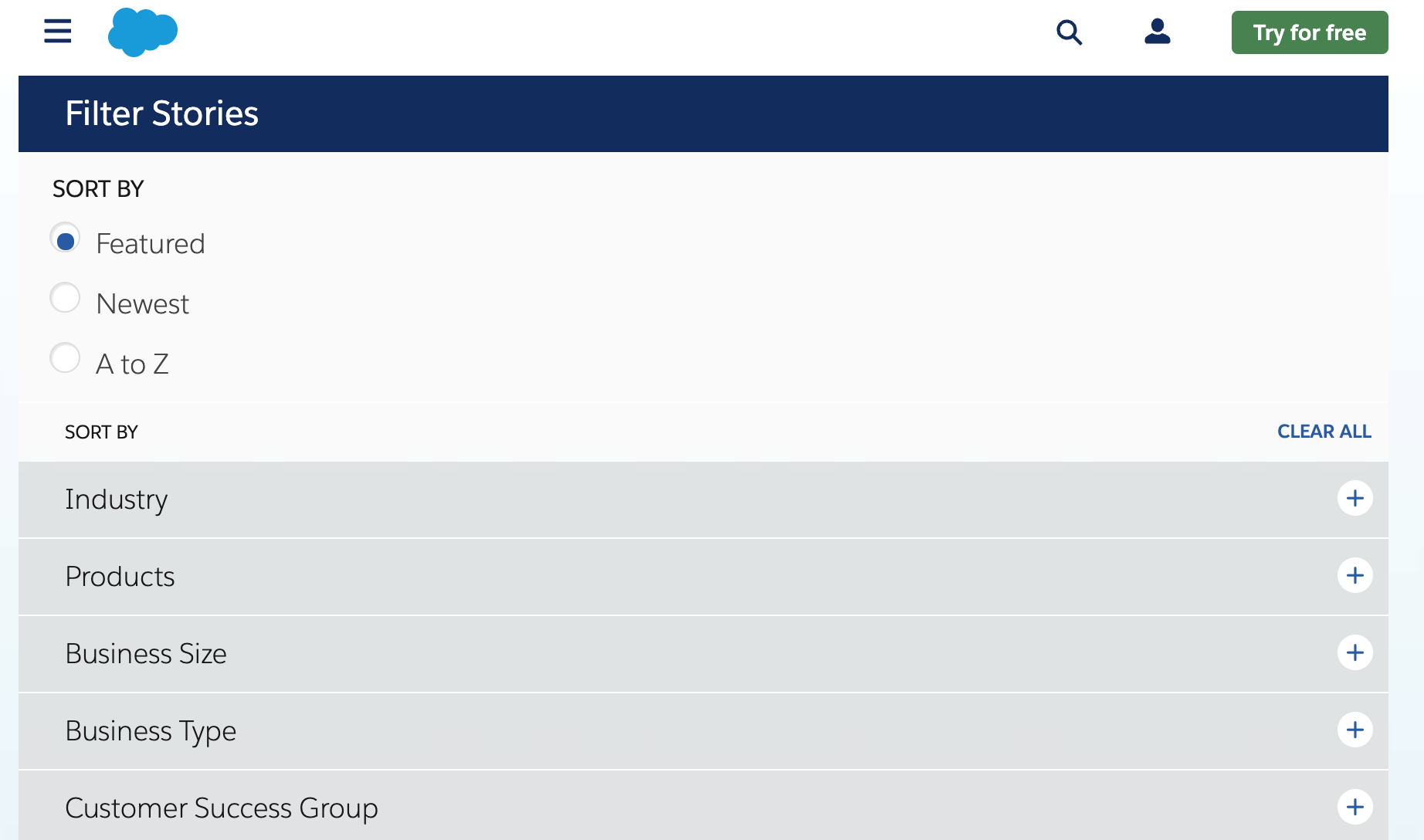
Allow Prospects to Find Companies Like Theirs Easily
Filters allow prospects to find and read the stories of companies who look like theirs.
If you’re not using filters, make plans to include them on your website.
When you create filters, you improve the experience of prospects and get one step closer to winning the sale.
Want to populate your website with case studies that align with your prospects? Check out my case studies pricing page and visit my contact page to get started.
Related post: 9 B2B Case Study Examples Worthy of Your Swipe File

Precious Oboidhe is a B2B SaaS content strategist and writer for hire. If you need help with strategizing and creating assets for the different stages of your content marketing funnel, get in touch.




Leave a Reply
Want to join the discussion?Feel free to contribute!